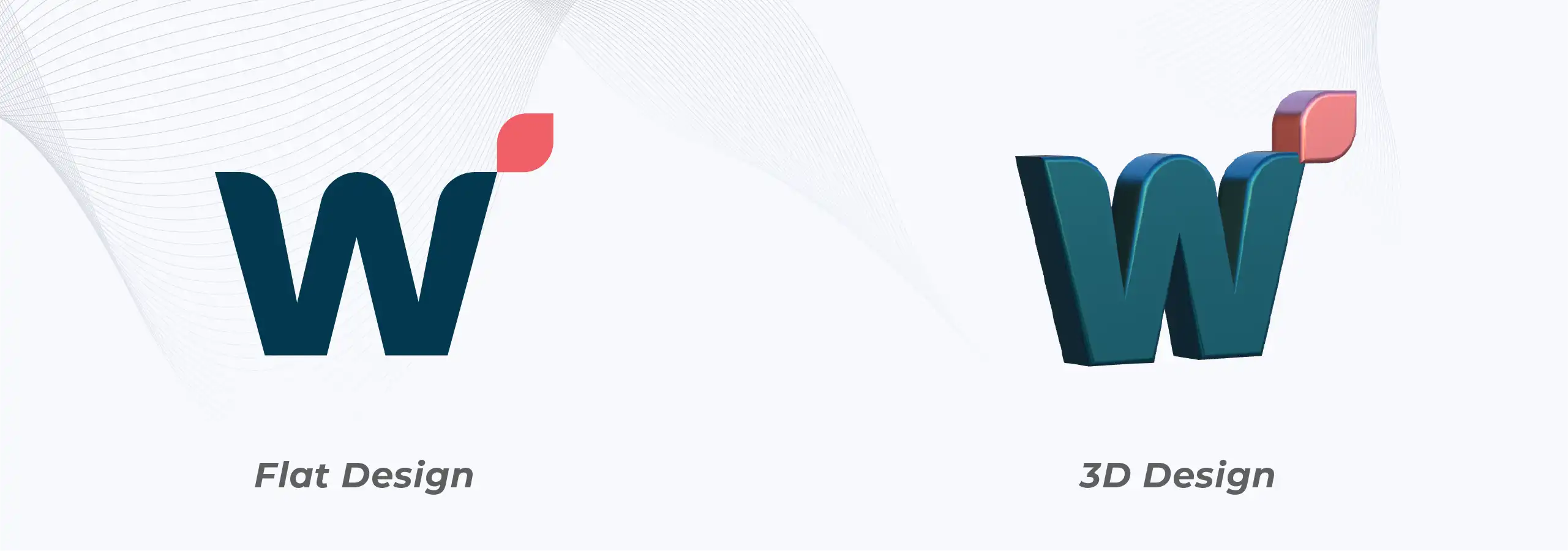Table of Contents
As we approach 2024, it is essential to understand the changes and advancements that will shape the UI/UX landscape. This blog provides a detailed analysis of the key factors to consider when taking UI/UX in 2024, including –
- Changes in practices
- Interface evolution
- Tools and software
- Custom Canvas vs. Theme-based Designs
- AI in UI/UX Design
- The job landscape of 2024
It’s time to buckle up and navigate through the twists and turns that will define the UI/UX landscape. So, fasten your seatbelt and get ready for a joyride through the UI/UX dimension of 2024 – where creativity meets technology, and every click is a step closer to digital nirvana.
Navigating the UI/UX Design Trends of 2024
Let’s dive into the future of design in 2024! Privacy takes the spotlight with ethical UI/UX, focusing on transparency and user control. Your well-being is a priority as designs aim for calming aesthetics and mindful interactions. Microinteractions steal the show with subtle animations and immersive experiences. Get ready for a 3D revolution as WebGL technology transforms interfaces, blurring the lines between the physical and digital realms.
Ethical Design Will Take Center Stage:
Ethical design in UI/UX emphasizes user well-being, privacy, and inclusivity, often placing these principles above the pursuit of trendy or minimalist aesthetics. Privacy concerns are paramount, and UI/UX design in 2024 will prioritize transparency, user control over data, and ethical data collection practices.
In contrast to designs that prioritize aesthetics, ethical design foregrounds the rights and values of users. It ensures that products are not only visually appealing but also accessible, transparent, and fair to all users, regardless of their abilities or backgrounds.
Key aspects of ethical design that designers must prioritize in 2024 include –
- Ensuring user consent is informed and freely given
- Enhancing accessibility for a diverse range of users
- Protecting user data through transparent practices
By focusing on these principles, ethical design will address privacy concerns in UI/UX by and offering users control over their own data and creating interfaces that make it clear how user information is handled
Mental Well-being in the Spotlight:
In 2024, the focus on mental well-being will significantly influence UI/UX design, leading to the creation of interfaces that promote relaxation and reduce digital strain. Soft color palettes and natural elements enhance mental well-being by creating a calming user environment. These design choices help reduce visual overload, evoke a sense of tranquillity, and foster a more harmonious interaction with technology.
Personalization Gets Granular:
In 2024, UI/UX design personalization will reach new heights by tailoring interfaces to individual preferences, behaviors, and even real-time emotional states. For example, an e-learning platform might adapt the content’s complexity based on the user’s mood and learning style, ensuring a highly personalized and engaging experience. Granular personalization differs from traditional approaches in 2023 by offering a deeper level of customization, with interfaces adjusting to the finest details of user behavior and preferences, creating an even more personalized and relevant user journey.
3D Design over flat ones:
From 2023 to 2024, 3D design advanced due to technological innovations and a growing preference for immersive experiences over flat design. This evolution was driven by increased computational power, enabling more sophisticated 3D modelling and real-time rendering. Alongside WebGL, several other 3D technologies emerged or grew in prominence, and these will reign in the UI/UX Design space in 2024. Let’s take a look.
- Virtual and Augmented Reality (VR/AR): These technologies use 3D designs to create fully immersive or augmented experiences, increasingly used in various sectors, from entertainment to education.
- Real-time Rendering Engines: Engines like Unreal Engine and Unity have become more prevalent outside gaming and are now applied in real-time rendering for industries like film and architecture.
- AI-Assisted Design Tools: AI has become crucial in automating complex 3D design tasks, optimizing workflows, and enhancing creativity.
- 3D Printing: The demand for 3D models in manufacturing, healthcare, and construction has risen with significant advancements in 3D printing technology.
- Cloud-Based Rendering Services: These services have enabled designers to render complex 3D models efficiently without needing high-end hardware and are increasingly democratizing access to advanced design capabilities.
Tools & Softwares
In the rapidly evolving world of UI/UX design, tools and software play a pivotal role in shaping how professionals craft, prototype, and deliver digital experiences. As we enter 2024, several groundbreaking tools and software have evolved to meet the increasing demands of this dynamic industry. Let’s explore some of the key tools and software that are defining the UI/UX landscape in 2024.
Advanced Prototyping Tools
Figma & Adobe XD
Figma and Adobe XD remain at the forefront of prototyping solutions, offering robust collaboration features that allow designers to work together in real-time, regardless of their location. In 2024, these platforms have introduced advanced animations and dynamic elements that can be integrated directly into prototypes, mimicking real-world application behavior more closely than ever before.
InVision Studio
InVision Studio has refined its capabilities, providing enhanced motion design features that allow for intricate interactions within prototypes. This tool also integrates seamlessly with InVision’s DSM (Design System Manager), making it easier for teams to maintain consistency across their design projects.
AI-Enhanced Design Assistance
Autodesk Graphic
Autodesk Graphic has introduced AI-driven tools that automatically suggest design adjustments, help optimize user flows, and propose accessibility improvements. This AI integration not only speeds up the design process but also ensures that the products meet high usability standards.
Sketch with AI Plugin
Sketch has integrated an AI plugin that performs automated usability tests on designs by simulating user interactions and providing feedback on potential friction points. This tool helps designers refine user experiences before they even reach the user testing phase.
Real-Time Collaboration Platforms
- Miro and Notion
Miro and Notion have become essential in the UI/UX toolkit for 2024, facilitating seamless communication and project management. Miro excels in creating user flow diagrams and wireframing collaboratively, while Notion serves as an all-in-one project management suite that integrates notes, tasks, databases, and more, tailored for design teams.
Comprehensive Design Systems
- Zeroheight
Zeroheight allows teams to create and maintain design systems easily, ensuring consistency across all digital assets. It integrates with tools like Sketch and Figma, making it accessible for designers to use and update in real-time, reflecting changes across all projects immediately.
- Frontify
Frontify provides a cloud-based brand management platform that is particularly useful for maintaining brand consistency across multiple channels. It combines logo, color, and font guidelines with asset libraries and templates, streamlining the brand management process.
Enhanced User Testing Software
Lookback.io
Lookback.io has advanced significantly in 2024, offering more nuanced user testing capabilities, including facial expression analysis, voice sentiment analysis, and deeper integration with biometric devices. These features allow designers to gather more detailed emotional reactions from users during testing phases.
UsabilityHub
UsabilityHub continues to provide quick and effective remote testing tools that allow designers to validate their assumptions and get rapid feedback on their designs. The platform has enhanced its demographic filtering to ensure that feedback comes from a representative segment of the target user base.
Virtual and Augmented Reality Design Tools
Unity and Unreal Engine
Both Unity and Unreal Engine have expanded their capabilities into the UI/UX space, allowing designers to create immersive VR and AR experiences. These tools are not only used for gaming but have become prevalent in creating realistic simulations for automotive, real estate, and education sectors.
Vuforia Studio
Vuforia Studio provides an intuitive platform for creating AR experiences that can be integrated into apps or websites. It allows designers to overlay digital information on real-world objects, enhancing the user experience in sectors like manufacturing and maintenance.
Code Integration and Front-End Development Tools
Webflow
Webflow has revolutionized the way designers translate their UI/UX designs into functioning websites without deep coding knowledge. It provides a visual interface for designing and launching websites, with a focus on responsive and interactive elements.
Axure RP
Axure RP continues to be a leader in producing high-fidelity prototypes that can also generate HTML and JavaScript code. This capability allows designers to hand off more accurate representations to development teams, reducing the iteration cycle.
Interface Evolution
Dive into the future with Interface Evolution in 2024. Discover the convergence of UI and UX for immersive experiences, departing from minimalism to prioritize content and intuitive navigation. Embrace mainstream voice and gesture controls and witness dynamic layouts seamlessly adapting across devices—let us have glimpses of an imminent design revolution.
Blurring the Lines Between UI and UX:
The traditional separation between UI and UX will fade, with designers focusing on holistic experiences that encompass every aspect of user interaction. Interfaces will be not just visually appealing but also deeply intuitive and emotional.
In 2023, designers faced challenges integrating these two areas seamlessly, leading to a potential disconnect between how a product looks and its functions. This separation affected design decisions, sometimes prioritizing aesthetics over user experience or vice versa.
Overcoming these challenges requires a more holistic approach. Designers need to consider both the visual appeal and the overall user journey from the outset, ensuring a cohesive and intuitive user experience.
Content Takes Center Stage:
In 2024, prioritizing content over design will enhance user engagement and accessibility online by providing clearer, more relevant information directly aligned with user needs.
The “Content Takes Center Stage” approach in UI/UX has shifted the focus towards delivering valuable content in an intuitive format, and ensuring that usability and relevance take precedence. This marks a departure from older approaches where visual design elements often overshadowed the actual content’s importance.
Minimalism will give way to content-driven interfaces prioritizing clear information hierarchy and user-friendly navigation. Content will be king, with UI elements designed to amplify its impact and guide users seamlessly through their tasks.
Voice and Gesture Take Control:
Voice interfaces allow users to interact with devices using spoken commands, while gesture interfaces enable control through physical movements or gestures. An example of a voice interface is Amazon’s Alexa, which responds to vocal prompts, and a gesture interface example is the motion controls used in Nintendo’s Switch gaming console.
Integrating voice and gesture functionalities can enhance user experiences by offering more intuitive and accessible interaction methods. Designers can make them work together by designing seamless transitions and complementary interactions, such as using gestures for precise control and voice commands for broader actions.
In 2024, these interfaces could redefine popular designs by making interactions more natural and immersive. For instance, a smart home system could use voice commands for general controls like adjusting temperature and gesture controls for finer adjustments, like dimming lights, offering a more intuitive and engaging user experience compared to traditional 2023 interfaces.
Custom Canvas vs. Theme-Based Designs
Picture this: it’s 2024, and UI/UX designers are the rockstars of the digital stage. We’re not just talking about a new font or a spiffy color palette. No, we’re diving into the nitty-gritty of everything – from custom canvas debates to theme-based design showdowns. In the arena of custom canvas vs. theme-based designs, it’s a battle of creativity versus convenience.
It is like choosing between handcrafted artisanal coffee and instant stuff. Each has its charm. Still, only one will give your user experience that extra kick. Take a look – here’s what we are talking about.
Efficiency vs. Uniqueness:
Themes across WordPress, Shopify, and Squarespace provide pre-designed templates that simplify web development. Theme-based tools offer quicker development times and easier maintenance but can result in generic and uninspired interfaces. With pre-designed templates and standardized components, designers can swiftly create visually appealing interfaces without reinventing the wheel. However, this convenience comes at the cost of uniqueness and brand differentiation.
In 2023, minimalist and mobile-responsive themes were trending, enabling developers to deploy aesthetically pleasing and functional websites quickly. Utilizing these common themes, developers could focus on customization and content rather than building from scratch, enhancing efficiency.
Moving into 2024, this trend is likely to continue, but developers will need to update their skills to incorporate emerging technologies like AI/ML and AR/VR in themes to maintain efficiency while meeting the evolving expectations of users for more interactive and personalized web experiences.
Standing Out in a Sea of Sameness:
Custom design involves creating unique, tailored solutions rather than using pre-made templates. This approach ensures originality and brand alignment but can impact project dynamics. Custom design allows for differentiation and brand identity but requires more time and resources.
For developers and designers, it demands closer collaboration and more creative input, potentially extending timelines. By handcrafting every aspect of the user interface, designers can create a truly unique experience that reflects the essence of the brand. Project managers must navigate these complexities, balancing creativity with project constraints.
While custom design can elevate the project’s uniqueness and effectiveness, it often requires a larger budget and more resources to accommodate the increased time and labor involved in crafting bespoke elements.
Custom canvas designs offer unlimited possibilities for creativity, enabling designers to bring their visions to life. However, this approach requires more time, effort, and resources.
The key lies in striking a balance between efficiency and customization. Developers can leverage theme-based tools as a foundation while adding their unique touches to create interfaces that are both functional and aesthetically pleasing.
AI in UI/UX Design
In today’s digital landscape, UX and UI design have become paramount for businesses to succeed. Creating a seamless and engaging digital experience for users is no longer a luxury but a necessity. Designers constantly explore new technologies and techniques to enhance their craft and deliver exceptional user experiences.
From predictive design suggestions to user behavior analysis, let’s look at how AI is the secret tool that adds that extra significance to your digital creation.
AI as an Amplifier:
AI can automate repetitive tasks, generate design variations, and analyze user data to inform design decisions. This frees up designers to focus on the strategic and creative aspects of the process.
By leveraging AI, designers can speed up their workflow, increase efficiency, and deliver high-quality designs in less time. The ability of AI to crunch large amounts of data and generate insights provides a valuable resource for designers to create personalized and relevant user experiences.
Collaboration is Key:
The future lies in human-AI collaboration, where designers leverage AI tools to enhance their workflow while retaining creative control. By working hand in hand with AI, designers can harness its capabilities to generate ideas, explore design possibilities, and streamline the iterative process. This collaboration empowers designers to push boundaries, experiment with new concepts, and deliver innovative solutions. Combining human creativity and AI’s analytical power can lead to groundbreaking user experiences that captivate and delight users.
With Wishtree by your side, create more engaging digital experiences in no time. Our AI & ML experts are right here for you!
Job Landscape of 2024
And, of course, let’s not forget the job landscape of 2024. It’s not just about having the right skills; it’s about riding the career wave like a pro surfer. What do the experts say? Well, to quote the wise UI/UX sage, “In the ever-changing dance of pixels and prototypes, only the adaptable survive.”
Let’s explore the essential skills designers should focus on mastering to thrive in the job landscape 2024.
T-Shaped Skill Set Takes the Lead:
T-shaped designers possess deep expertise in a specific design area (the vertical bar of the “T) and broad knowledge across related disciplines (the horizontal bar).
Their major skill sets include mastery in a core design field, such as UX design, coupled with research, project management, and basic coding skills.
In 2023, designers often faced challenges in interdisciplinary collaboration and adapting to rapidly changing technology landscapes.
In 2024, T-shaped designers will lead by bridging these gaps, enhancing team collaboration, and driving innovation by applying their wide-ranging skills to address complex design challenges in an increasingly interconnected and technologically advanced environment.
Designers must develop a T-shaped skill set, combining deep expertise in their core areas (e.g., visual design and interaction design) with a broader understanding of adjacent fields like accessibility, psychology, development, etc.
Data-Driven Design Becomes Essential:
Data-driven design refers to the practice of using user data and analytics to inform and shape design decisions. Microsoft’s Power BI transforms raw data into engaging, interactive reports for insightful, data-driven decisions.
For example, Netflix uses data-driven design by analyzing viewing patterns to personalize user interfaces, recommend content, and even influence original content creation.
This approach helps designers create more engaging, personalized, and effective user experiences by ensuring designs are grounded in actual user behavior and preferences, leading to higher user satisfaction and engagement. Understanding user data and analytics will be crucial to informing design decisions and personalizing user experiences. Learning data visualization and interpretation skills will become a valuable asset.
Understanding Codes is a Necessity:
In the context of UI/UX design, understanding front-end coding languages such as HTML, CSS, and JavaScript is particularly beneficial. These languages are fundamental for creating and styling web interfaces and adding interactivity.
When designers have a grasp of these coding principles, they can more effectively communicate with developers, understand the constraints and possibilities of digital projects, and prototype their designs with a higher degree of fidelity.
This skill set not only enhances a designer’s ability to execute their vision but also makes them more versatile and valuable in the job market, as they can bridge the gap between design and development.
Soft Skills Gain Prominence:
Communication, collaboration, and critical thinking will remain essential. Designers must effectively communicate their ideas, collaborate with diverse teams, and think critically to solve complex design challenges.
In Conclusion
In 2024, the UI/UX landscape will continue to evolve, presenting both challenges and opportunities for designers. Designers can thrive in this dynamic and ever-changing field by embracing the changes, staying abreast of the latest trends, and continuously honing their skills. So, buckle up and get ready to ride the UI/UX design wave in 2024!
Wishtree, a product engineering services company with an unmatched reputation, Wishtree Technologies provides solutions to an array of clients, including Fortune 500 companies, Thoma Bravo, Vista Equity Partners, UN Agencies (WHO, UNDP, World Bank) Nonprofits, and Startups.
Contact us today for a free consultation.





